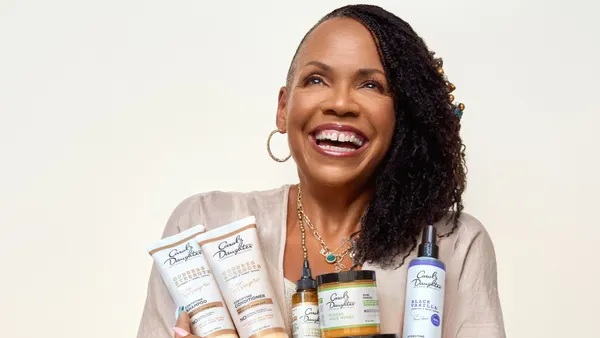The social commerce market is poised to reach $1.2 trillion globally by 2025, according to Accenture. That's a whole lot of financial opportunity for brands and retailers.
Over the past month alone, we've seen TikTok, Meta, YouTube and Pinterest announce an expansive list of new commerce offerings. While these new capabilities help streamline the customer experience and reduce friction between initial inspiration and conversion, it also can overwhelm the marketing and content teams that need to optimize their investments. By taking the following 5 steps, you can develop an actionable social commerce strategy that is relevant to your consumers and addresses leadership goals and expectations.
1. Understand where your target customer is: It may seem a bit obvious, but you'd be surprised at how many marketing teams overlook this fundamental step in the strategic planning process. Especially in the flashy, fast-moving world of social media, it's easy to get lost in the excitement and jump right to the new, hot platform. In some cases, it makes perfect sense: TikTok has officially topped Google as the most-visited website on the internet, so it likely makes sense for your brand to be there. But before you hop on that niche community (I'm looking at you, Roblox), make sure you know this is where your consumers are — and where they want you to be, too.
2. Develop your content strategy with social listening: That's right, before you get too excited, take a moment to listen and observe. You want to ensure that your content is engaging and memorable — and most of all, motivates consumers to act. You won't know that until you listen to your audience. Monitor social comments and service emails, as well as other inquiries across all channels to determine how you can use social content to meet their wants and needs. Even scrappy tools like the Instagram Q&A and polling features can help you create an open dialogue with your consumers. Talk about a gold mine for content ideas!
3. Expand your definition of "influencer": The explosion of TikTok has expanded the pool of high-paid influencers. Now, it seems like anyone could become the next big sensation — and your next big marketing tool, but don't fall into the trap of forging partnerships with in-demand tastemakers and creators. Think critically about whether these creators hold weight with your audience and can truly make an impact, especially when they're known for taking on any deal that comes their way.
Micro-influencers, nano-influencers and gigfluencers have unlocked entirely new opportunities for brands that want to reach consumers in an authentic (and not to mention cost-effective) way. Your brand's particular category likely has a host of specific experts, bloggers, creators and tastemakers that are a perfect fit for your social commerce strategy. You also have incredible employees who know your products and love your brand. Don't be afraid to bring them into your plan! By redefining who influencers are and the role they play in your business, you can create more authentic and relatable experiences for consumers, which can lead to a better ROI for your business.
4. Tap into your community at scale: Social commerce is so powerful because it gives brands instant access to vibrant communities. Communities that don't just love your brand but want to contribute to the stories you're telling, the products you're creating and the impact you're making on the world. As Sandie Hawkins, TikTok GM of North American Global Business Solutions, has appropriately said: social commerce is "word of mouth on steroids."
Use content prompts and posts to gather insights, feedback and content from your customers. Encourage fans and followers to share reviews, before-and-after posts, how they style or use your product, or even funny memes that feature your brand. This will be a new social content engine for your business that helps you spotlight your star customers and inspires them to amplify their contribution. (But of course, be sure to get their permission first.)
5. Thoughtfully repurpose and reuse social content: Don't let your social content exist in a vacuum. Rather than forcing your marketing and creative teams to constantly create net-new content for your social commerce initiatives, find thoughtful ways to repurpose content from your influencer and customer communities. Brands with robust social commerce strategies, like W3LL PEOPLE, incorporate social imagery into their product pages, email campaigns and even display advertising. Incorporating these more authentic and contextual images can pay off significantly, especially as consumers look for more "real" insight into how products look or can be used. In fact, 88% of consumers say authenticity is important when deciding which brands to support and 79% of consumers say user-generate content highly impacts their buying decisions.
We're three years away from Accenture's 2025 prediction deadline, which means we can expect a lot more updates, including new features, capabilities and ad products. But with a customer-focused strategy as your foundation, you'll be set up for success— no matter how the social commerce landscape shakes up.










